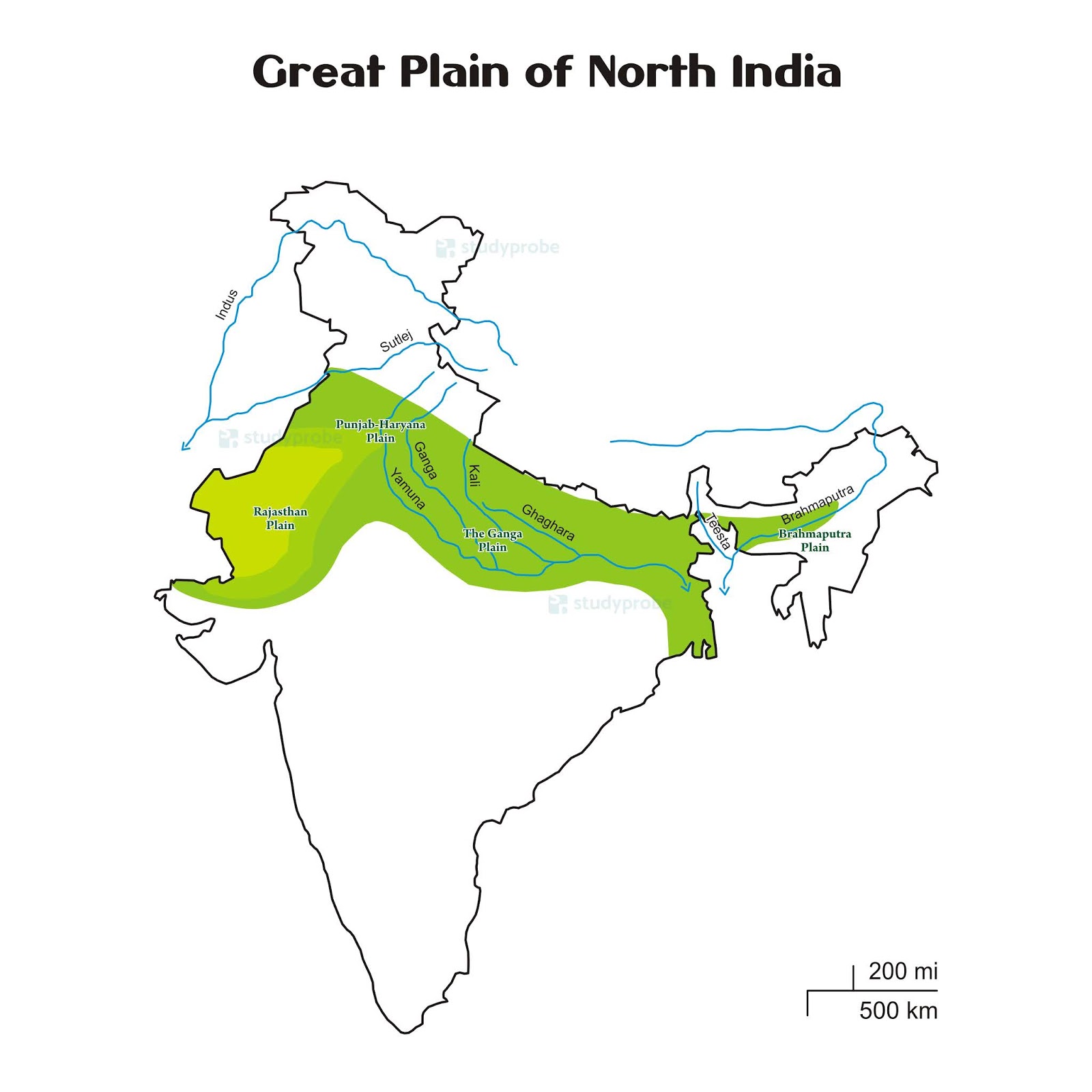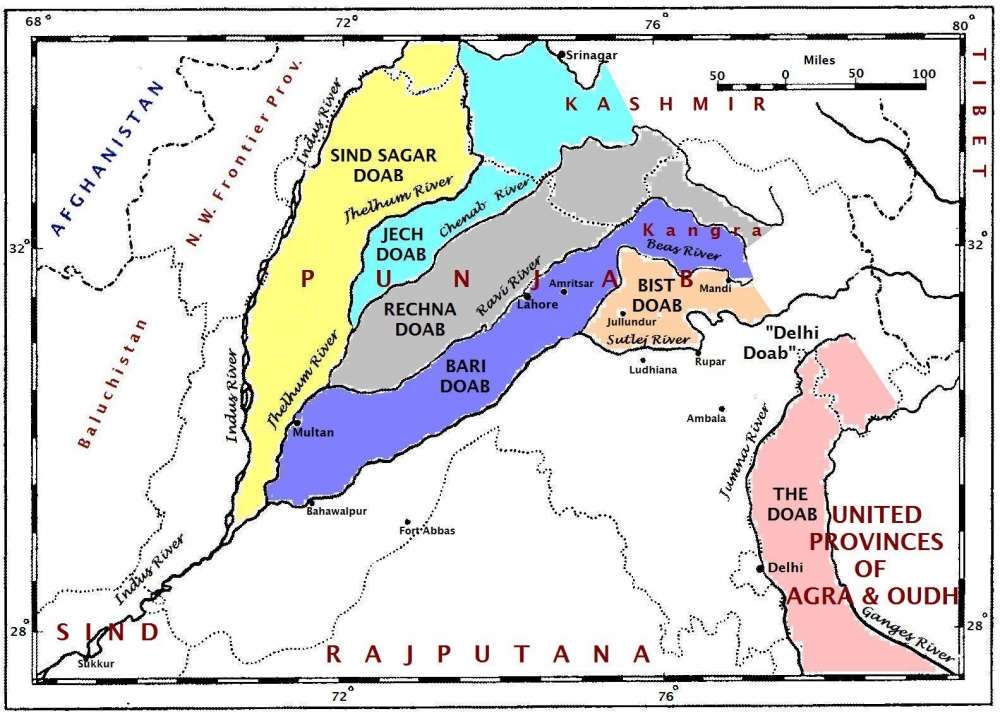
scsprjsstclass4d
Indo-Gangetic Plain, extensive north-central section of the Indian subcontinent, stretching westward from (and including) the combined delta of the Brahmaputra and Ganges (Ganga) rivers to the Indus River valley. The region contains the subcontinent's richest and most densely populated areas. The greater part of the plain is made up of alluvial soil deposited by the three main rivers and.

Indian Physiography Northern Plains of India Indo Gangetic Plain
North India, also called Northern India or simply the North, is a loosely defined region consisting of the northern part of India.The dominant geographical features of North India are the Indo-Gangetic Plain and the Himalayas, which demarcate the region from the Tibetan Plateau and Central Asia.In a sometimes administrative sense, North India may be used to denote the Indo-Gangetic Plain.

The Northern plains of Indiaphysical divisions of Indiasocial studies class4CBSE YouTube
The northern plains are the largest alluvial tract of the world. These plains extend approximately 3200 km from west to east. The average width of these plains varies between 150 and 300 km. In general, the width of the northern plains increases from east to west (90-100km in Assam to about 500km in Punjab).
North Indian Plain Map
The North Gangetic Plains of India, Bangladesh and Nepal. The Ganges River is in the middle of the plains.. The Gangetic Plains is the large space of level land that is made by the Ganges River in the northern parts of India and the border surrounding areas of the Himalayas.It is an important part of the countries of India, Nepal, and Bangladesh.Its space of about 700,000 square kilometers or.

Mapsofindia Blog India's No. 1 Mapping Site Page 17
Northern Plains of India. The Northern Plains of India, following the Indian desert, constitute the second-youngest physiographic region in the country. Bounded by the Shiwalik range to the north, the Desert to the west, the Peninsular Plateau to the south, and the Puruvachal Hills to the east, these plains are shaped by the alluvial deposits of the Indus, Ganga, and Brahmaputra river systems.

THE GREAT INDIAN CONTINENT THE NORTHERN PLAINS OF INDIA
The great plains of northern India, also known as Ganga-Satlej Plains, are, in fact, transitional belt between the Himalayas and Peninsular India. The great plains cover an area 7,74,000 km 2 (3,00,000 square miles) having west-east length of 2400 km and north- south width of 144 km. Except Aravallis in the Rajas than plains no part of these.

Physiographic map of India Himalayan Mountains, Great Plain of North India, Peninsular Plateau
The northern plain of India is formed by three river systems, i.e. the Indus, the Ganga and the Brahmaputra; along with their tributaries. The northern plains are the largest alluvial tract of the world. These plains extend approximately 3200 km from west to east. The average width of these plains varies between 150 and 300 km.

Indo Gangetic Plains IndoGangeticBrahmaputra
Plains of Northern India, also known as the Gangetic Plains, is situated in the southern Himalayan Region. The Northern Plains spreading from Assam to Punjab has a length of around 2400 km and the width ranges between 150 km to 300 km, varying in different regions. It can be found in Bihar, Punjab, Assam, West Bengal, Uttar Pradesh, parts of.

Northern Plains of India, Features, Map, States, Rivers, Importance
Physical Map of India showing major rivers, hills, plateaus, plains, beaches, deltas and deserts.. Northern Plains or Indo Gangetic Plains; The Himalayan Mountain Ranges or Northern Mountains;

Physical Features of India Class 9th Notes Punjabi Leverage Edu
North India is a well-defined region of the northern part of India. The Indus-Gangetic Plain and the Himalayas are the important geographical features of this region and delimitate it from the.

Geography Map Marking by Neetu Singh
Indo-Gangetic Plain Clusters of yellow lights on the Indo-Gangetic Plain reveal numerous cities large and small in this photograph of northern India and northern Pakistan, seen from the northwest. The orange line is the India-Pakistan border.. The Indo-Gangetic Plain, also known as the North Indian River Plain, is a 700-thousand km 2 (172-million-acre) fertile plain encompassing northern.

Give an account of the Northern Plains of India? CBSE Class Notes Online Classnotes123
Physiographic Divisions of Great Plains of India. The northern plains are classified into three major physiographic divisions: The Bhabar; The Tarai; The Alluvial Plains; Now let us discuss the principal features of each of these aforementioned divisions. The Bhabar. Running in the east-west direction, the Bhabar belt is around 8-10 km long.

scsprjsstclass4d
A Northern Plains map of India typically shows the major rivers, cities, states, and geographical boundaries of the Northern Plains region. Q. What is the significance of a Northern Plains map? Ans. A Northern Plains map helps visualize the geography of the vast plain region, including its rivers, cities, and states, aiding in the study of its.

Give an account of the Northern Plains of India? CBSE Class Notes Online Classnotes123
Northern Plains of India. Northern plains of India or Indo-Gangetic plains form the second largest physiological division of India with an approximate area of 21 percent of the total geographic area of India. The Ganga, Indus and Brahmaputra flow through these plains and provide plenty of water for irrigation.

Untitled Document [www.csun.edu]
However, the highest point in India is Mount Kanchenjunga which rises to 28,208 ft. (8,598 m). The Northern Plains, south of the Himalayan Region, is made up of the Gangetic Plains formed by the Indus, Ganges, and Brahmaputra river systems. This region is a large and fertile alluvial plain that stretches across several states and is the country.

Map of India showing the proposed extant of 'Gangetic plains... Download Scientific Diagram
The Northern Plains of India are created because of the alluvial deposits of the Indus, Ganga, and Brahmaputra rivers. The soil of the northern plains of India is mostly alluvial. The plains are mostly ideal for agriculture and are fertile soil. Due to fertile lands and dependence on agriculture, the northern plains are heavily populated.